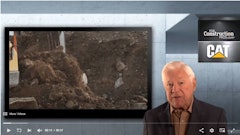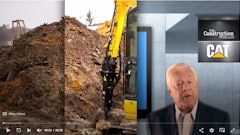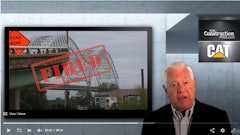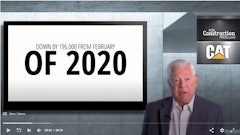Construction News Tracker is brought to you by Caterpillar and produced by ForConstructionPros.com.
Spending on U.S. construction in June unexpectedly fell 1.3% to a seasonally adjusted rate of $1.2 trillion. Before the Commerce Department's preliminary estimate was released, economists polled by Reuters had forecast the value of construction put in place in June to increase 0.4%. Private construction spending declined for the third month in a row driven by residential weakness also in its third month of decline. Public spending tumbled 5.4% — the sector's biggest drop since March 2002 — drawn down by a 6.6% plunge in highway and street spending and a 5.5% drop in the educational construction category.
209,000 jobs were created in July far exceeding economist's expectations of only 183,000 new jobs created. Construction alone saw an additional 6,000 new jobs for the month. This causes the nationnal unemployment rate to drop further now at 4.3%, the lowest since March of 2001. The Labor Department also reports the number of employed Americans hit a new high of 153.5 million while the employment to population ratio has moved up to 60.2 % — the highest since February of 2009, which means more unemployed are leaving those ranks for new jobs.
Caterpillar's second quarter earning report gives new impetus to the big equipment maker. Higher sales and revenue with larger profit managed to raise the full year outlook.
Second quarter sales and revenue came in at $11.3 billion compared with $10.3 billion in the same period of 2016 while per profit share rose from 93 cents to $1.35. Machinery energy and transportation sectors cash flow strengthened to $2 billion. Cat CEO Jim Umpleby noted that while some Cat markets remain a challenge Chinese construction and North American gas compression notched highlights in the company's quarterly report.
A stunning announcement from two of the world's largest automakers. Toyota and Mazda will team up in a move to build a $1.6 billion joint venture assembly plant in the U.S. While a location has not been revealed, both firms say the plant would have a capacity to churn out 300,000 vehicles annually and employ an estimated 4,000. The plant is expected to be completed in 2021. Where and how big such a plant would be is, of course, on the construction future's map, so stay tuned.
Construction could begin soon on a massive plant in southeastern Wisconsin along the Illinois border to create liquid crystal display panels. Foxconn of Taiwan says it will proceed with the project on a 1,000 acres to build a 20 million-square-foot campus in the vicinity of Racine and Kenosha. When completed it would employ 13,000.
The firm also seeks to build another 700,000-square-foot facility in Dane County. The major construction project would result in spending $250 million in Interstate Highway 94 improvements, and result in over 10,000 construction jobs. When completed, Foxconn says it would be one of the largest manufacturing campuses in the world.
A recent Bloomberg poll indicated 55% of Americans are in favor of a hike in the federal gas tax, which would be a boon to efforts in reaching a one trillion dollar infrastructure package being advanced by the Trump Administration. Meanwhile, the Federal Highway Administration is reporting the latest quarterly cost index cites highway construction costs have increased 67% since 2003. Asphalt costs have gone up 107%, concrete is up 61% and metal 45% in the 13-year time frame. Even states have experienced significant cost jumps with California's composite construction cost index rising 143% and Texas jumping 122%.
The St. Croix Crossing bridge that links Minnesota and Wisconsin at Stillwater has officially opened to traffic. What took 20 years of wrangling between the two states is now reality. We profiled the structure during construction last year and pointed out its unique mix of technology between stay cable and concrete box bridge design. The top of the pylons are 220 feet above the water line, while the road bed is 150 high. Caissons 9-feet in diamater were driven 25 feet into bedrock. Engineers estimate upwards of 40,000 vehicles a day will cross the new span.
A $17 billion tunnel project has been approved for the Sacramento San Joaquin River in northern California. Known as the California Waterfix, Sacramento River water would be directed southward into two 35-mile tunnels toward southern California reducing the harm to fish caused by pumping stations presently operating along the route. If approved by all entities involved it would become an outstanding engineering feat.
In closing, anyone can count the seeds in an apple. No one can count the apples in a seed.
This is Construction News Tracker looking over the industry that makes the world a better place, presented by Caterpillar and produced by ForConstructionPros.com.
Follow us on social media at Twitter using #constructionnews and both Facebook and YouTube as the streaming Web never ends.





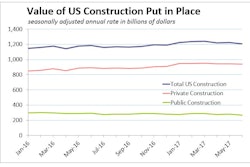
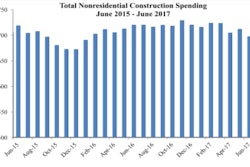
![[VIDEO] Special Report: St. Croix River Crossing Project](https://img.forconstructionpros.com/files/base/acbm/fcp/image/2016/08/default.57b36a4548658.png?auto=format%2Ccompress&fit=crop&h=167&q=70&w=250)





